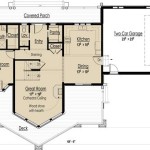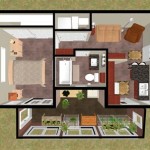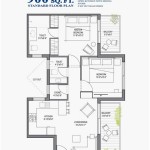Permanent Tiny House Plans are architectural designs for compact, movable dwellings intended for permanent habitation. Unlike traditional tiny house designs that are primarily used for recreational purposes, permanent tiny house plans adhere to building codes and regulations, ensuring the structures can be safely and legally occupied over an extended period.
The popularity of permanent tiny house plans has grown in recent years due to their affordability, sustainability, and flexibility. They offer an alternative to traditional housing, providing a more accessible and eco-friendly option for individuals and families.
In the following sections, we will explore the key features of permanent tiny house plans, discuss the factors to consider when designing and building one, and showcase inspiring examples of these innovative living spaces.
When designing and building a permanent tiny house, careful consideration should be given to various factors to ensure a comfortable and functional living space. Here are 9 important points to keep in mind:
- Zoning regulations
- Building codes
- Foundation type
- Energy efficiency
- Water and sewage systems
- Storage and space planning
- Ventilation and insulation
- Appliance and fixture selection
- Safety features
By addressing these key aspects, you can create a permanent tiny house plan that meets your specific needs and provides a sustainable and enjoyable living experience.
Zoning regulations
Zoning regulations are laws that govern the use of land and buildings within a specific area. These regulations are typically established by local governments and can vary significantly from one jurisdiction to another.
When it comes to permanent tiny house plans, zoning regulations can have a major impact on the feasibility of your project. In some areas, tiny houses may be prohibited altogether, while in others they may be allowed only in certain zones or with specific restrictions.
Before you start designing or building your tiny house, it is essential to check with your local zoning department to determine what regulations apply in your area. You can typically find this information online or by visiting the department in person.
If tiny houses are not explicitly permitted in your area, you may need to apply for a variance or special permit. This process can be time-consuming and expensive, but it may be your only option if you are determined to build a tiny house in a specific location.
Zoning regulations can be complex, so it is important to do your research and understand the requirements before you start building. If you are unsure about anything, it is always best to consult with a local zoning official.
Building codes
Building codes are technical regulations that govern the design, construction, and alteration of buildings. These codes are in place to ensure that buildings are safe, habitable, and energy-efficient.
Permanent tiny house plans must comply with all applicable building codes, just like any other type of building. This includes codes related to structural integrity, fire safety, electrical systems, plumbing, and energy efficiency.
In some cases, tiny houses may be exempt from certain building code requirements. For example, some states have adopted the International Residential Code (IRC) which includes a section on tiny houses. The IRC allows for some flexibility in the design and construction of tiny houses, as long as they meet certain minimum standards.
However, it is important to note that building codes can vary from one jurisdiction to another. It is always best to check with your local building department to determine what codes apply in your area.
If you are planning to build a permanent tiny house, it is important to work with a qualified contractor who is familiar with the building codes in your area. A good contractor can help you design and build a tiny house that is safe, code-compliant, and meets your specific needs.
Foundation type
The type of foundation you choose for your permanent tiny house will depend on a number of factors, including the size and weight of your house, the soil conditions on your property, and your budget.
- Slab foundation
A slab foundation is a simple and cost-effective option for tiny houses. It consists of a single layer of concrete that is poured directly on the ground. Slab foundations are well-suited for small, lightweight houses on level ground.
- Crawl space foundation
A crawl space foundation is similar to a slab foundation, but it includes a small crawl space beneath the house. This crawl space can be used for storage or to access utilities. Crawl space foundations are a good option for houses on sloping ground or in areas with high water tables.
- Basement foundation
A basement foundation is a more expensive option, but it provides more space and flexibility. Basements can be used for storage, living space, or even as a garage. Basement foundations are a good option for larger houses or for houses on uneven ground.
- Pier foundation
A pier foundation consists of a series of piers that are driven into the ground. The house is then supported on top of the piers. Pier foundations are a good option for houses on soft or unstable soil.
It is important to choose the right foundation type for your permanent tiny house. A qualified contractor can help you assess your needs and choose the best option for your project.
Energy efficiency
Energy efficiency is an important consideration for any home, but it is especially important for tiny houses. Tiny houses have a smaller footprint than traditional homes, which means they have less space for insulation and other energy-saving features. As a result, tiny houses can be more difficult to keep warm in the winter and cool in the summer.
- Insulation
Insulation is one of the most important factors in determining the energy efficiency of a tiny house. Insulation helps to keep heat in during the winter and out during the summer. There are a variety of insulation materials available, so it is important to choose one that is appropriate for your climate and budget.
- Windows and doors
Windows and doors are another important source of heat loss in tiny houses. Choose energy-efficient windows and doors that have a high R-value. R-value is a measure of how well a material resists heat flow. The higher the R-value, the better the insulation.
- Appliances
Energy-efficient appliances can also help to reduce your energy consumption. Look for appliances with the Energy Star label. Energy Star appliances meet strict energy efficiency standards set by the U.S. Environmental Protection Agency (EPA).
- Lighting
LED lighting is the most energy-efficient lighting option available. LED bulbs use up to 80% less energy than traditional incandescent bulbs. They also last much longer, so you will save money on replacement costs over time.
By taking these steps, you can create a permanent tiny house that is energy-efficient and comfortable to live in all year round.
Water and sewage systems
Water supply
There are two main options for water supply in a permanent tiny house: municipal water and well water. Municipal water is supplied by a public water utility and is typically the most convenient and reliable option. However, it can also be more expensive than well water.
Well water is supplied by a private well that is drilled on your property. Well water can be a more affordable option than municipal water, but it is also more susceptible to contamination. It is important to have your well water tested regularly to ensure that it is safe to drink.
Water storage
Once you have chosen a water supply, you will need to decide how to store the water. There are a variety of water storage options available, including tanks, cisterns, and rain barrels. The size of the water storage system you need will depend on the size of your household and your water usage habits.
It is important to have a backup water supply in case of an emergency. A good rule of thumb is to have at least one gallon of water per person per day for three days.
Water treatment
Depending on your water source, you may need to treat the water before it is safe to drink. Municipal water is typically treated by the water utility, but well water may need to be filtered or disinfected before it is safe to drink.
There are a variety of water treatment options available, including filtration, disinfection, and reverse osmosis. The type of water treatment you need will depend on the quality of your water source.
Sewage disposal
There are two main options for sewage disposal in a permanent tiny house: septic system and composting toilet. A septic system is a underground tank that stores and treats sewage. Septic systems are typically more expensive to install than composting toilets, but they are also more convenient.
A composting toilet is a self-contained system that converts human waste into compost. Composting toilets are more affordable to install than septic systems, but they require more maintenance.
The type of water and sewage system you choose for your permanent tiny house will depend on a number of factors, including the size of your household, your budget, and your lifestyle.
Storage and space planning
Storage and space planning are essential considerations for any home, but they are especially important for tiny houses. Tiny houses have a limited amount of space, so it is important to make the most of every square foot.
There are a number of creative ways to maximize storage and space in a tiny house. Here are a few tips:
- Use vertical space
Vertical space is often overlooked, but it can be a valuable asset in a tiny house. Use shelves, cabinets, and drawers to store items vertically. You can also use stackable bins and baskets to maximize space.
- Multi-purpose furniture
Multi-purpose furniture is a great way to save space in a tiny house. Look for furniture that can serve multiple functions, such as a bed with built-in storage or a coffee table that can also be used as a dining table.
- Declutter and purge
It is important to declutter and purge regularly to keep your tiny house organized and clutter-free. Get rid of anything you don’t use or need. If you have items that you don’t use often, consider storing them in a self-storage unit or with a friend or family member.
- Be creative
There are endless possibilities when it comes to storage and space planning in a tiny house. Be creative and come up with your own solutions to maximize space. For example, you could use under-bed storage, hang shelves on the walls, or use a Murphy bed to save space.
By following these tips, you can create a permanent tiny house that is both functional and comfortable.
Ventilation and insulation
Ventilation
Proper ventilation is essential for any home, but it is especially important for tiny houses. Tiny houses have a limited amount of space, which can lead to poor air quality if the house is not properly ventilated.
There are a number of ways to ventilate a tiny house. One way is to open windows and doors. However, this is not always possible, especially in cold weather. Another way to ventilate a tiny house is to use a fan. Fans can be used to circulate air throughout the house and to remove stale air.
It is also important to have a ventilation system that can remove moisture from the air. Moisture can build up in a tiny house due to cooking, bathing, and other activities. If the moisture is not removed, it can lead to mold and mildew growth.
Insulation
Insulation is another important factor to consider when designing a permanent tiny house. Insulation helps to keep heat in during the winter and out during the summer. This can help to reduce your energy bills and make your tiny house more comfortable to live in.
There are a variety of insulation materials available, so it is important to choose one that is appropriate for your climate and budget. Some common insulation materials include fiberglass, cellulose, and spray foam.
It is important to properly install insulation in your tiny house. If the insulation is not installed correctly, it will not be effective in keeping your house warm or cool.
By following these tips, you can create a permanent tiny house that is well-ventilated and well-insulated. This will help to make your tiny house more comfortable and energy-efficient.
Appliance and fixture selection
Appliances and fixtures are an important part of any home, but they are especially important for tiny houses. Tiny houses have a limited amount of space, so it is important to choose appliances and fixtures that are both functional and space-saving.
- Energy efficiency
Energy efficiency is an important consideration when choosing appliances and fixtures for a tiny house. Tiny houses have a smaller footprint than traditional homes, which means they have less space for insulation and other energy-saving features. As a result, tiny houses can be more difficult to keep warm in the winter and cool in the summer.
Choosing energy-efficient appliances and fixtures can help to reduce your energy consumption and make your tiny house more comfortable to live in. Look for appliances and fixtures with the Energy Star label. Energy Star appliances and fixtures meet strict energy efficiency standards set by the U.S. Environmental Protection Agency (EPA).
- Size
Size is another important consideration when choosing appliances and fixtures for a tiny house. Tiny houses have a limited amount of space, so it is important to choose appliances and fixtures that are appropriately sized.
Measure the space where you plan to put each appliance and fixture before you buy it. This will help you to avoid buying appliances and fixtures that are too big or too small for your tiny house.
- Functionality
Functionality is also an important consideration when choosing appliances and fixtures for a tiny house. Tiny houses have a limited amount of space, so it is important to choose appliances and fixtures that are functional and meet your needs.
Consider how you will use each appliance and fixture before you buy it. Make sure that the appliance or fixture is the right size, shape, and style for your needs.
- Aesthetics
Aesthetics are also important to consider when choosing appliances and fixtures for a tiny house. Tiny houses are often designed to be stylish and unique. Choose appliances and fixtures that complement the style of your tiny house.
Consider the finish, color, and design of each appliance and fixture before you buy it. Make sure that the appliances and fixtures match the overall aesthetic of your tiny house.
By following these tips, you can choose appliances and fixtures that are functional, space-saving, and stylish for your permanent tiny house.
Safety features
Smoke and carbon monoxide detectors
Smoke and carbon monoxide detectors are essential safety features for any home, but they are especially important for tiny houses. Tiny houses have a limited amount of space, which means that smoke and carbon monoxide can build up quickly. Smoke and carbon monoxide detectors can help to alert you to a fire or carbon monoxide leak so that you can take action to protect yourself and your family.
Fire extinguishers
Fire extinguishers are another important safety feature for tiny houses. Fire extinguishers can help you to put out a small fire before it gets out of control. It is important to have at least one fire extinguisher in your tiny house, and to make sure that everyone in your household knows how to use it.
First aid kit
A first aid kit is an essential safety feature for any home, including tiny houses. A first aid kit can help you to treat minor injuries and illnesses. It is important to have a first aid kit in your tiny house, and to make sure that it is stocked with the necessary supplies.
Emergency escape plan
In the event of a fire or other emergency, it is important to have an emergency escape plan. Your emergency escape plan should include two ways to escape from your tiny house, and a meeting place outside where everyone in your household can gather. It is important to practice your emergency escape plan with everyone in your household so that everyone knows what to do in the event of an emergency.
By following these tips, you can make sure that your permanent tiny house is safe and secure.










Related Posts








